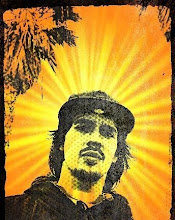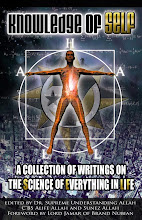
Manufactured Division and Gang Conflict
by Tomás Alejo via WBB Wednesday Apr 11th, 2007 10:19 AM
by Tomás Alejo via WBB Wednesday Apr 11th, 2007 10:19 AM
In the influential and time-honored book The Art of War, Sun Tzu instructs that one of the most effective methods used to defeat an enemy is to "cause division among them." The book further instructs, "Seduce them with the prospects of gain, send interlopers in among them, have rhetoricians use fast talk to ingratiate themselves with their leaders and followers, and divide up their organization and power." It is when the enemy is divided that it is at its weakest and susceptible to attack and defeat.
Ensuing the Second World War, Europe was left in economic and geographic devastation. As a result, the United States became the world’s dominant super power and set forth to gain control of the world’s economies through military power and neo-liberal arrangements. Competing ideologies, such as communism and socialism, were seen as a threat to American interest. Yet, while American corporations prospered, third-world countries were ravaged by rampant capitalism and years of Western colonial rule. In the United States, the working class, especially blacks and Latinos, became unemployed and marginalized due to shifting economies and institutional racism.
Inspired by the Cuban Revolution, the poor and oppressed people of the Americas began to rebel against racism, abuse, exploitation and U.S. domination. In countries such as Nicaragua and El Salvador, Marxist revolutionaries ejected their governments and created a more equable society. In the United States, non-white populations demanded civil rights and freedom from institutional segregation. Militants, such as the Black Panther Party (BPP), aggressively fought injustice and police harassment. Fearing a communist-socialist takeover, the U.S. Government and economic elites set forth covert and psychological operations to neutralize revolutionary activity.
Utilizing manufactured division, the U.S. military and counter-intelligence agencies disrupted the insurgent’s organizational foundations. In Nicaragua, the U.S. military trained segments of the native population (the Contras) to help eradicate the Sandinistas. Domestically, these tactics were most evident in the government’s efforts to annihilate the Black Panther Party. In prison, counter-intelligence agencies manufactured division and conflict amongst prisoners and gangs - successfully pacifying organized rebellion against the system.
For decades, prisoners, regardless of race, had organized loosely to demand an ease to overcrowding, the protection of constitutional rights and humane treatment. However, it was not until 1970 that George Jackson, a California prisoner and BPP member, was able to organize black prisoners under militant revolutionary ideology. Through education, Jackson helped create a climate of political consciousness within California prisons, which in turn enabled many prisoners to understand institutionalized racism and the mechanisms of U.S. oppression. Through his efforts, conciliation and political solidarity was established between prisoners, gangs and racial factions in efforts to demand and create better living and working conditions. The threat of revolutionary insurgency within the California prison system became especially apparent after the Angola Prison Riot that left many prisoners and guards dead. California prison officials set forth covert programs to destroy Jackson and all revolutionary activity.
Emulating the FBI’s COINTELPRO (Counter-Intelligence Program), which a year earlier fabricated hostility between the BPP and the United Slaves, the California Department of Corrections formed its own counter-intelligence unit, known as the Internal Gang Task Force (IGTF), their first task was to impede solidarity between black revolutionaries (namely, Jackson’s Black Guerrilla Family) and the Mexican Mafia. In 1971 George Jackson was assassinated by guards at San Quentin Prison. Leaders from the BGF (Black Guerrilla Family) and the Mexican Mafia were slain and all-out war erupted between both factions.
Revolutionary agitators were removed from the prison’s general population and isolated in the CDC’s notorious Secluded Housing Units (SHU). In addition, the IGTF infiltrated prison gangs and organizations with informant, saboteurs and provocateurs that dismantled these groups into mere ignorant criminal hordes. Through manufactured division, the CDC victoriously took political power from prisoners and put it back in the hands of the State.
Due to harsh criminal penalties and unemployment, by the late 1970’s the Mexican-American population multiplied within the California prison system. In efforts to protect Latino inmates from predators and other racial (racist) segments, Mexican-American prisoners formed the Mexican Mafia (La Eme). Fusing Chicano nationalist ideology and illicit forms of survival, La Eme became the largest and most powerful prisoner organization behind prison walls. Contact with Jackson and newly-arriving Chicano political prisoners, such as members of the Brown Berets, swerved La Eme into a more international and revolutionary direction. However, IGTF’s manufactured division between La Eme and the BGF prevented revolutionary consciousness from expanding through the Mexican-American prison population. Energy that was once used to struggle against racist guards, draconian laws, inhumane treatment, overcrowding and exploitation was now exhausted in prisoner strife and friction. Furthermore, through classification methods, prison officials racially segregated prisoners and increased alienation, especially amongst blacks and Latinos.
In the mid-1980’s, La Eme became divided when Mexican-Americans from Northern California broke ties with their southern counterparts (namely Los Angeles) who dominated the leadership. Northerners, frustrated by their lack of hierarchal representation in La Eme, and oppressed and misconceived as bumpkins, formed their own organization and named it Nuestra Familia (NF). The IGTF quickly capitalized on this division.
In 1985, several leaders of the NF were mysteriously murdered and a war between the factions ensued. Years of conflict between these groups filtered to the streets providing the prison industrial complex with new bodies and tax-payer money. Moreover, draconian laws and sentencing enhancements have provided an over-abundance of black and brown youth in prison. While politicians use incarceration and "get tough laws" for political gain, and while the State spends millions of dollars on prisons and criminal prosecution, poor communities are suffering from dilapidation, under-performing schools, police terrorism, unemployment, low college enrollment and teen pregnancy. Teens left in the margins seek comradeship, identity and material comfort (promoted by popular culture), and find this in gang and drug activity. The unending cycle of incarceration continues through generations of blacks and Latinos. Understanding manufactured division promoted by the U.S. military and counter-intelligence agencies can help end this cycle of incarceration, create solidarity, implement revolutionary consciousness and action.
What to Do
A call for peace and unity between gangs is not enough and may seem preposterous to gang members due to bloodshed and the loss of friends and family. However, a vision must be created that calls for conciliation in order to realize a greater common and covert enemy. In order for this to happen, bonds between gang/prison leadership and academic intellectuals must be established. For decades, academics have attempted to stir the mainstream and middle-class with deep analysis of capitalism and U.S. domination. Yet due to complacency, the mainstream has been reluctant to respond (other than marching). I believe the focus of energy must be invested in the most marginalized population - the prisoner and gang member. It is important to consider that street-gang politics are dictated from behind prison walls. So it is in prison where we must start. Correspondence and book programs must be created and funded by academics, students and social activists. At the same time, prison gang leadership must be willing to be open to dialogue and provide protection for political prisoners. Prison gangs are the greatest potential for revolution!
In revolutionary struggle, your comrade from behind enemy lines,
One love. Uhuru! Mexica Tiahui!
Tomas
c/s Black and brown power!
http://brownberets.info
http://brownberets.info
PEACE!
























